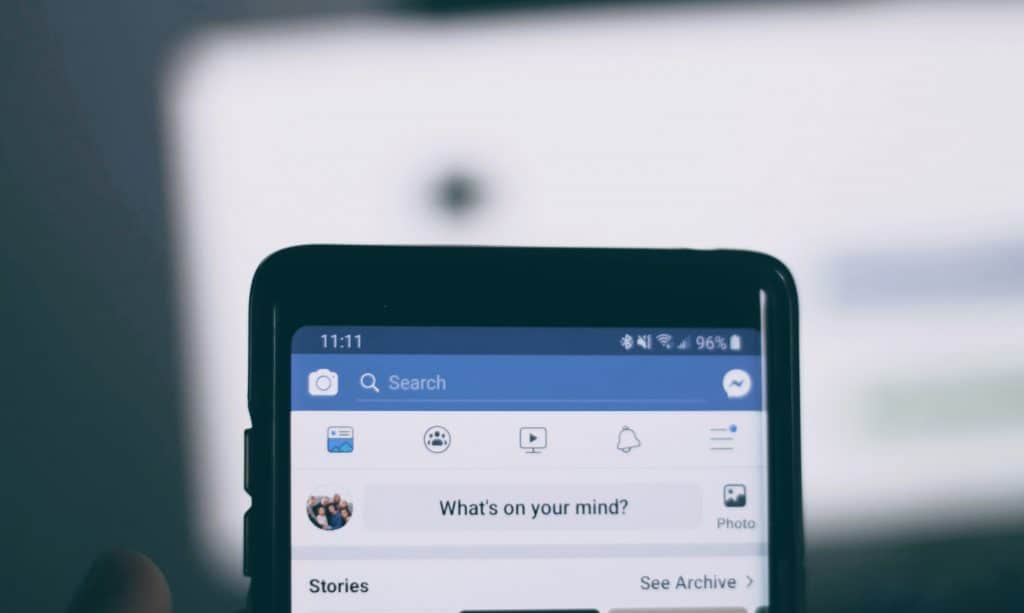Gaming is big business these days, whether you are a game developer with a cool idea, a programmer on the bleeding edge of technology, or a streamer growing your following on Twitch, there is plenty of money to be made within the realm of gaming.
But is any of that money on Facebook?
The quick answer is yes, you can make money on Facebook gaming, and this is true for both gamers and developers. Of course, if you’ve clicked on an article with this headline, you’ll naturally want to know more about it. Don’t worry, we have you covered.
Facebook and Gaming
Though it’s not necessarily one of the more well-known aspects of Facebook, the platform actually has a long history with gaming, stretching right back to the early days of poking and throwing sheep at users.
Yes, throwing sheep on Facebook was a thing.
These days, Facebook games are a little more sophisticated, ranging from quizzes to perennial favourites like Farmville, and even games of the kind of quality that would once have been a standalone release.
Of course, making games is not your only avenue. Gaming streams are very popular these days, and Facebook provides the means to post and live stream video content. These two approaches naturally have very different implications for how you can make money, but the money is certainly there to be made.
That being said, there are many important keys to success online, and two of them are;
- Write what you know
- Know your audience
We are going to be guided by both in this post. Firstly, we’re not game developers. Secondly, the typical audience for this blog is far more likely to want to read advice on monetising gaming streams than games themselves. For that reason, the rest of this post will be primarily concerned with Facebookers who are playing games, rather than making them.

Playing Games on Facebook
The first thing to make clear about Facebook in regards to gaming is that the platform is not designed for this. Unlike Twitch, which is practically built with gaming in mind, or YouTube, which was built for something else but lends itself well to gaming content, Facebook was built with very different goals in mind.
What this means is that you shouldn’t expect much help from Facebook itself in your quest to make money gaming.
There are ways to make money gaming on Facebook, of course—there are almost always ways to make money these days. We’re going to go over some of these ways very soon, but the point we’re trying to get across is that you will, for the most part, have to find ways to monetise your content that Facebook perhaps hadn’t intended when they set out.
But before we get into how you get paid, let’s start with how you game.
How to Game on Facebook
Gaming content is, of course, mostly video-based. Facebook has a few options for you when it comes to getting video content out there, and any of them can be pressed into service as a gaming medium.
The first way you can get video content out on Facebook is, simply, by linking it. Whether it’s on Twitch, YouTube, Vimeo, or anywhere else, you can always create a post linking out to your content so that your Facebook audience is aware of it. Of course, this doesn’t present you with any way to monetise that content through Facebook, but in this case, Facebook is really just acting as a promotional platform. Any monetisation you have in effect elsewhere for the content you are linking should still be in effect.
If we’re keeping things on Facebook, however, there are two main options for monetising gaming content; posting videos and Facebook Live.
Posting videos is simple enough; you create a new post, attach your video, and away you go. As long as you make sure it is public, you can promote your Facebook video just like you would with videos on other platforms. Alternatively, going Live is more akin to streaming on Twitch. You will need to have a little technical knowledge with live streams to get your game onto Facebook Live, but there is plenty of help out there for you. Indeed, Facebook even has resources of their own to help you out.
Monetising Facebook Gaming Content
We won’t go into how to monetise content on other platforms that you are linking to from Facebook because, well, we’ve done that in other posts and videos. So, for the purposes of this post, we’re going to stick with Facebook’s built-in methods of monetisation.
Stars
For those of you who are familiar with Twitch—perhaps you’ve dabbled or perhaps you are established there and looking to branch out—Facebook’s stars are essentially the same as bits on Twitch.
These are only available for Facebook Live streams. Viewers can gift stars to the streamer who will get one cent per star received. Facebook users can buy stars in bundles, the price (at the time of writing) is around double what the streamers get per star, meaning Facebook users are paying roughly two cents per star. Viewers can gift as many stars as they want, but by default, they are presented with a selection of preset amounts, such as 50, 200, 1,000, and more.
In-Stream Ads
In-stream ads are a far more traditional form of monetising video content. These ads can be played before, during, or after the video, with a percentage of the revenue being shared with the creator. In the case of Facebook Live, mid-roll ads (ads that are played part-way throught the video) will take over the main view, but the live stream itself will still be playing in a smaller floating window for the duration of the ad. This way, the viewers are served ads with minimum possible disruption.
Of course, like other platforms, it is not as simple as clicking a button to get ads on your video content—you have to meet the criteria set out by Facebook (or as of very recently, Meta).
The first and most obvious criteria is being compliant with Facebook’s Partner Monetisation Policies. These things change regularly, so always worth have a read through before signing up to anything, but at the time of writing, there is nothing out of the ordinary in these policies. Things like residing in an eligible country, adhering to community standards, sharing content you have the rights to, and so on.
After that, the criteria gets a little more straightforward and clearcut. You must have at least 10,000 followers, for one thing. Another hurdle to jump is the fact that you must have at least 600,000 watch minutes over the last 60 days. These watch minutes are counted across all on-demand, live, and previously live videos, but does not count crossposted content or boosted/paid watch time. And, finally, your page must have at least five active videos. Again, these can be live, previously live, or on-demand, but not crossposted or boosted videos.
If you don’t meet all of these criteria, it’s not the end of the world. As we said above, there’s always other ways to monetise your Facebook content.

Speculative Side Note
You might have noticed earlier that we made a passing reference to “Meta”. Meta is something of a rebranding for Facebook (the company, not the website), and a large part of that seems to be their intention to make big waves in the virtual reality world.
Granted, Facebook has already made big waves in the virtual reality world with their release of the Oculus Quest 2, a game-changer in terms of what you get for your money, but they have even bigger plans.
The reason we bring this up is that VR is already a rapidly growing market in the gaming content space, and it looks set to keep growing in the near future. At the same time, Facebook (or, rather Meta) look poised to be one of the major players in this space. So, if you are a gamer looking to make money through Facebook and you’re not already experimenting with the possibilities of virtual reality, it may be something you want to look into. It’s not quite getting in on the ground floor, but it’s something.
Final Thoughts
Facebook’s requirements for showing ads on your gaming content may seem a little steep at first glance, but they are not your only option. With a dedicated audience (which, remember, is not necessarily the same as a large audience), you can easily make a decent amount of money through Facebook’s stars. Failing that, you can always monetise your content elsewhere, such as using a Patreon, or selling merchandise. Even just using YouTube as a traffic funnel to get viewers to your Twitch or YouTube page can be an effective strategy.
As always, however, the trick is to stick with it, and don’t be discouraged if the money isn’t pouring in after the first few months. These things take time.












































